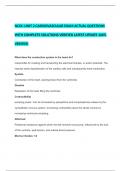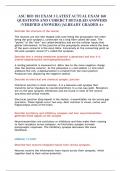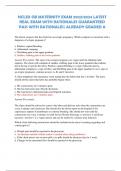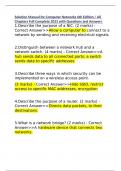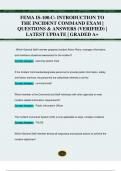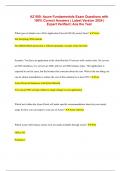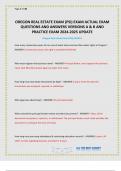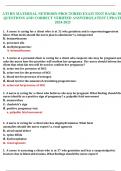Tentamen (uitwerkingen)
NCOI- UNIT 2 CARDIOVASCULAR EXAM ACTUAL QUESTIONS WITH COMPLETE SOLUTIONS VERIFIED LATEST UPDATE 100% VERIFIED
- Vak
- NCOI
- Instelling
- NCOI (NCOI)
NCOI- UNIT 2 CARDIOVASCULAR EXAM ACTUAL QUESTIONS WITH COMPLETE SOLUTIONS VERIFIED LATEST UPDATE 100% VERIFIED What does the conduction system in the heart do? responsible for creating and transporting the electrical impulse, or action potential. The impulse starts depolarization of the cardiac...
[Meer zien]
